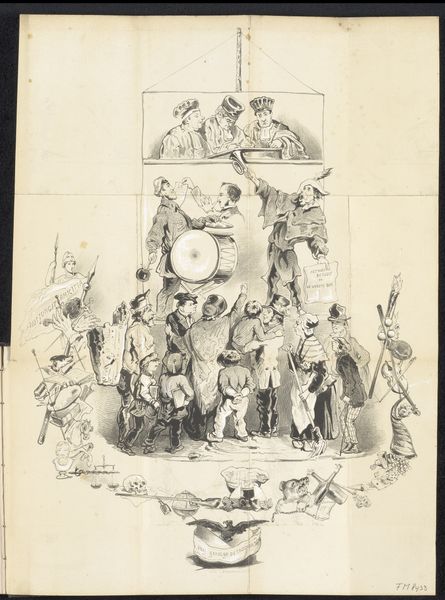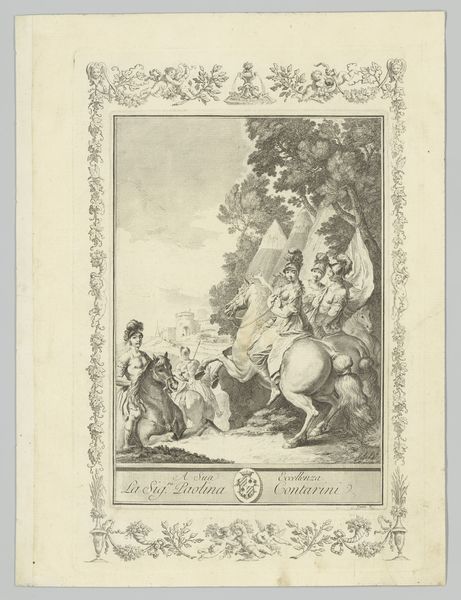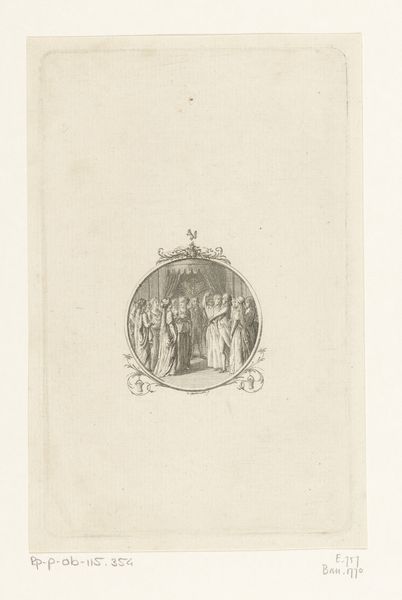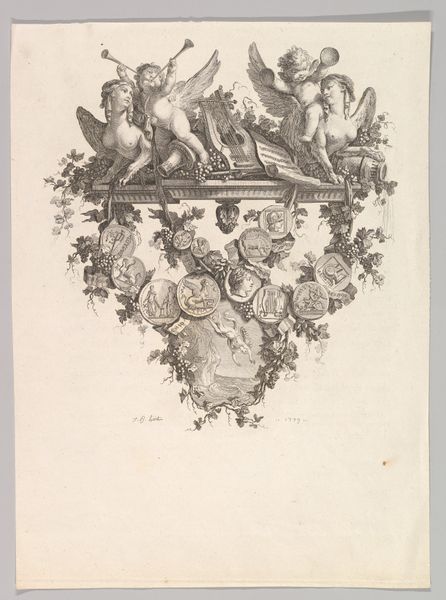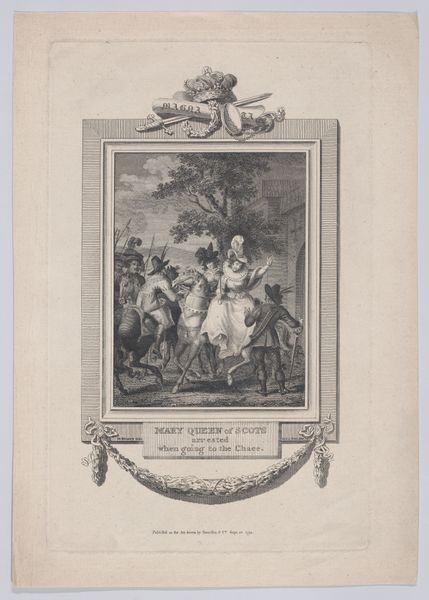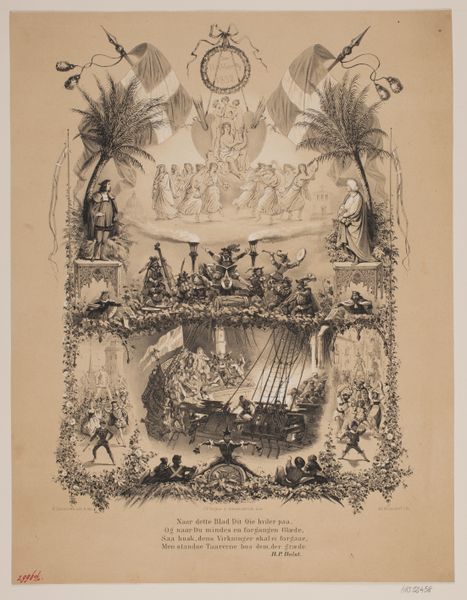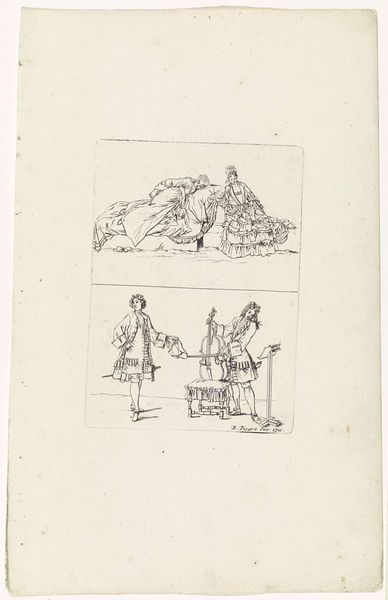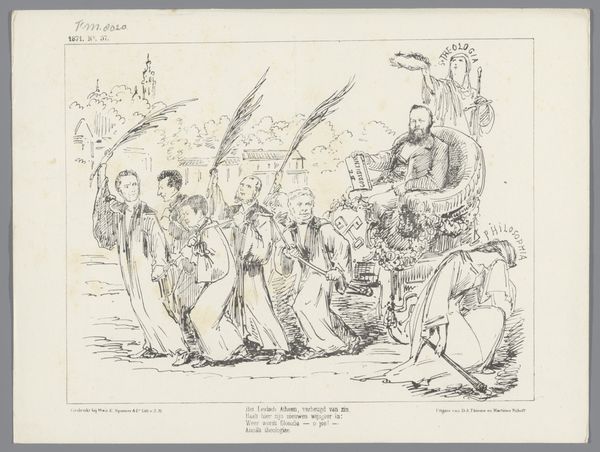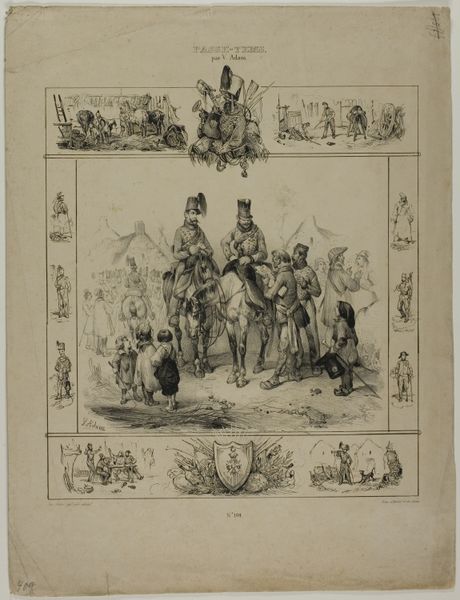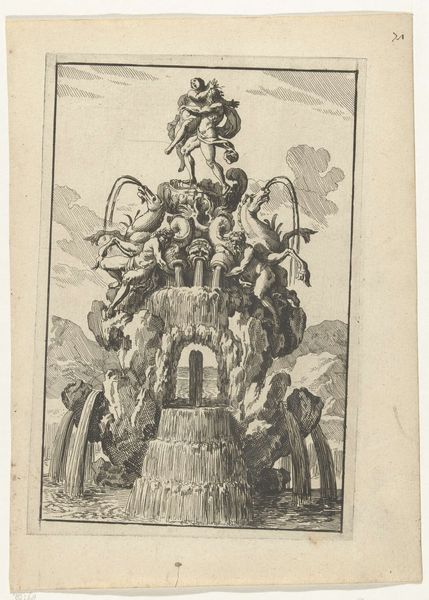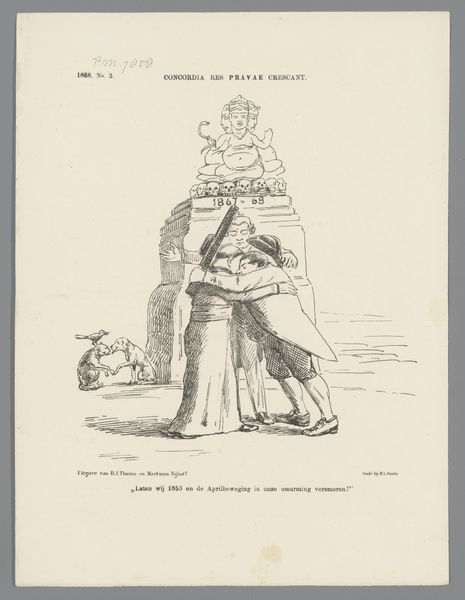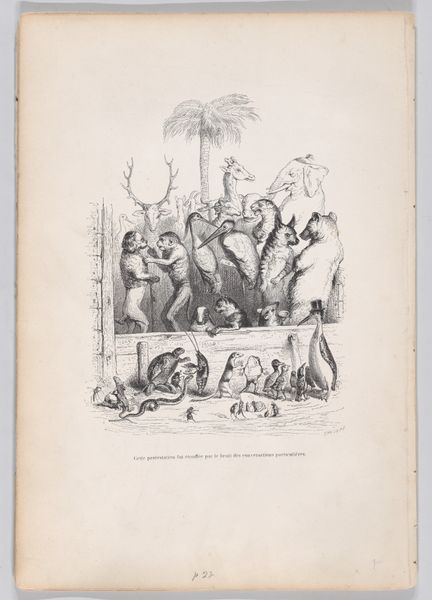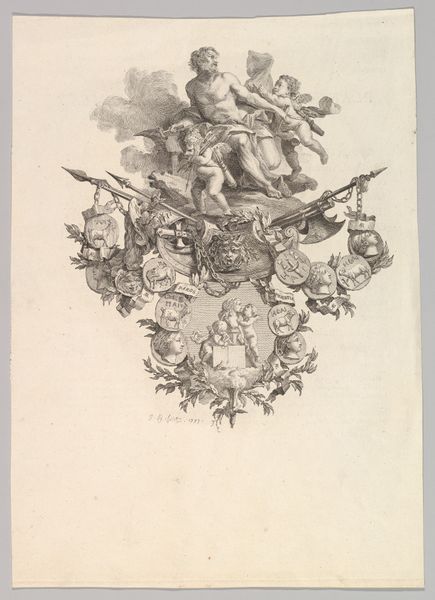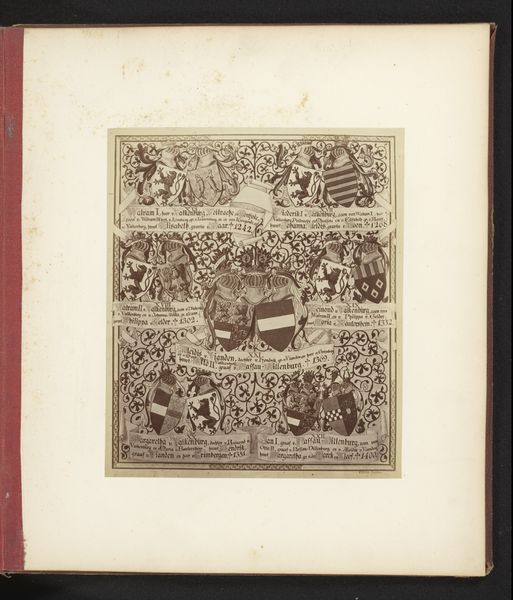
drawing, paper, ink, pen
#
drawing
#
comic strip sketch
#
aged paper
#
narrative-art
#
caricature
#
sketch book
#
paper
#
personal sketchbook
#
ink
#
sketchwork
#
pen-ink sketch
#
pen work
#
sketchbook drawing
#
pen
#
storyboard and sketchbook work
#
sketchbook art
Dimensions: height 275 mm, width 215 mm
Copyright: Rijks Museum: Open Domain
Editor: This is "Spotprent op gouverneur Mijer," a drawing from 1867. The artist is Johan Michaël Schmidt Crans, and it's made with pen and ink on paper. It strikes me as a very pointed commentary, a sort of visual metaphor… What do you see in this piece? Curator: Well, instantly I’m drawn to the symbolic weight these images carry. This caricature clearly critiques colonial governance in the Dutch East Indies, now Indonesia. The central figure juggling “Suiker fabrieken” (sugar factories) and “Koffie Balen” (coffee bales) obviously signifies economic exploitation. But note how that figure balances precariously on what seems to be a stylized island—a stand-in for the colony itself. Editor: Yes, it looks as though he might fall any minute...and the people below holding up that platform look exhausted. Is the implication that the entire colonial system is unsustainable? Curator: Precisely! Consider the historical context: 1867. Dutch colonial policy was under increasing scrutiny for its exploitative labor practices. This image uses the language of caricature to expose the inherent instability of a system built on forced labor. The island balancing on the backs of laborers brings forth this sense of burden; this continuity of that struggle as a potent symbol over time. Editor: So the visual language – the balancing act, the straining figures – all contributes to a larger cultural understanding of colonialism? Curator: Exactly! It acts as a potent, visual shorthand that taps into a shared understanding – and perhaps a shared discontent – within the Dutch populace at the time. The sketch's rough lines add a certain urgency and rawness, almost as though the artist were compelled to communicate the problem urgently and honestly. Editor: That’s fascinating. I hadn’t considered how much historical weight a simple sketch could hold. Thanks for highlighting those crucial elements! Curator: My pleasure! It reminds us how political commentary persists across time. Visual languages really show this ability to maintain culture memory!
Comments
No comments
Be the first to comment and join the conversation on the ultimate creative platform.
